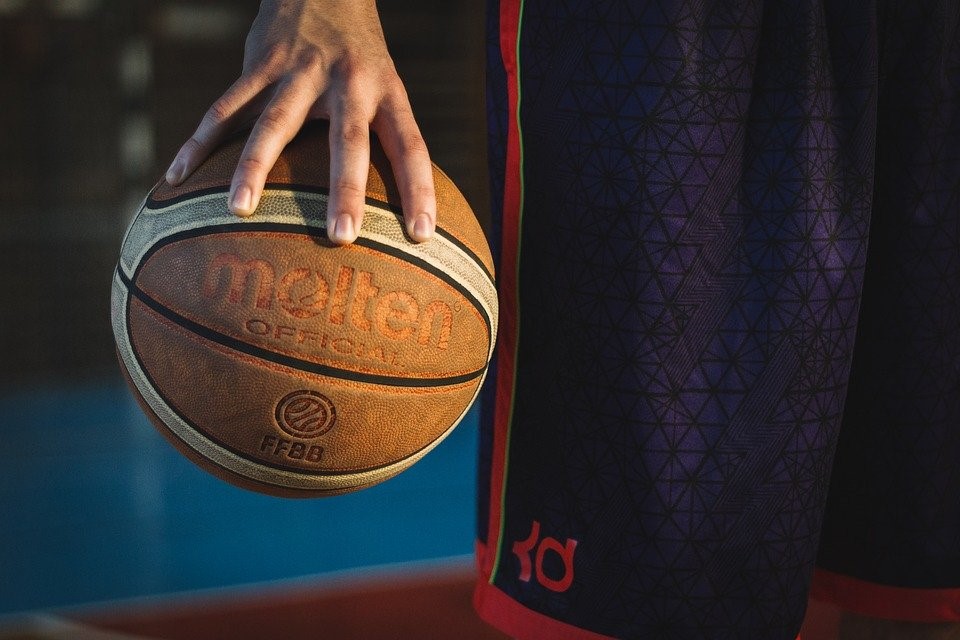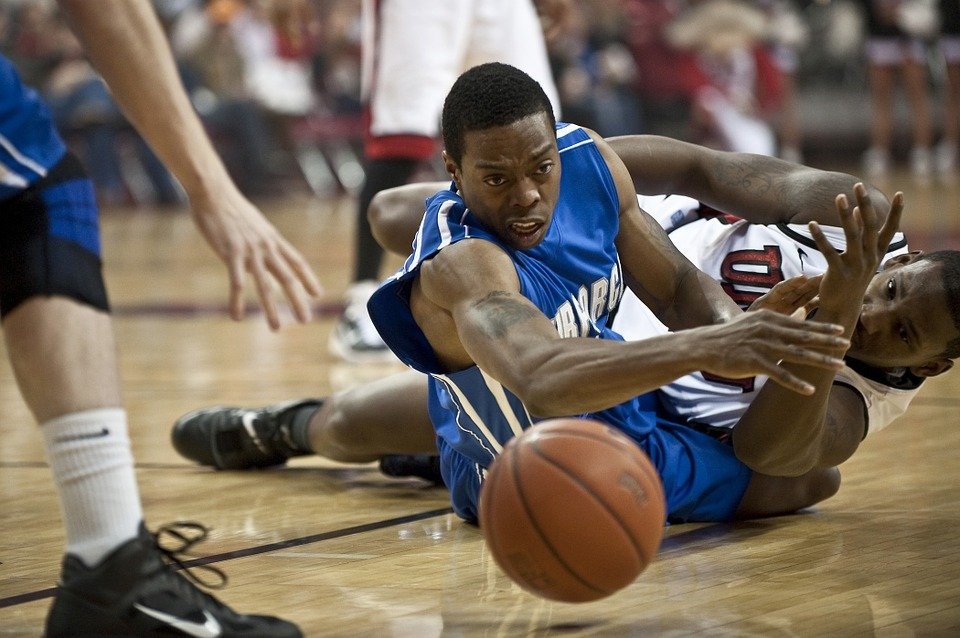Last Updated on October 26, 2022 by admin
Have you ever wondered how basketball players like Steph Curry can average 24 points per game? Or better yet, how they can simply pull up on pretty much any part of the court and take their shot?
Of course, a lot of it has to do with their natural-born talent and years of practice. However, what many people don’t talk about much is the fact that these professionals often practice using a weighted basketball rather than a regulation basketball.
What is a Weighted Basketball?
A weighted basketball weighs a bit more than the standard ball. Most weighted basketballs weigh about 3lbs (the standard weight of a basketball is around 1.30lbs), making this training basketball at least twice as heavy as a standard ball.
While this slight difference in weight might not seem like much, it does add up when you take on a weighted basketball on the court. The more you run around with it, dribble it and shoot, the heavier it seemingly becomes.
With time, your body adapts to that weight and becomes stronger. This means that any time you go back to using a regulation basketball, it will seem lighter, and your movements will seem faster. The heavier ball helps improve your ball handling skill.
But we get ahead of ourselves!
Most professional athletes make use of one weighted tool or another for the very same reasons:
- Soccer players play with weighted anklets to improve their foot strength and overall speed
- Baseball players play with a “donut” on their bats to improve bat speed
- Runners jog with weights in their hands to improve overall fitness
The examples are endless. The bottom line is that using a weighted aide and other basketball training equipment like it whenever exercising can make you a better, fitter, and faster athlete, depending on what you are using.

Benefits of Using a Weighted Basketball for Practice
There’s more to practicing with a weighted ball than just gaining strength. Let’s take a look at some of the benefits that come with this habit and explore some aspects of your game that this may improve.
1. Improves Your Overall Strength
The main reason professional players run basketball drills on a day-to-day basis is so that they can improve their muscle strength, speed, and conditioning in those areas.
While doing this with a standard ball has its benefits, much like any other repetitive exercises and drills, adding a weighted ball into the mix offers far more benefits.
Not only will you become stronger and faster using a heavy ball during practice, but your body will become more agile, making you a much better player with a standard ball on the court.
The whole idea here is that using a weighted ball during practice demands more of your muscles, making them bigger, stronger, and more responsive.
Since you are essentially conditioning these muscles to work through a heavier load, when you start using a standard, lighter ball, it takes longer to strain those very muscles meaning that you benefit from improved strength and endurance.
2. Improved Dribbling Speed and Mobility
One of the biggest issues that most basketball players face when they want to gain strength is lifting weights.
The problem with this is that depending on how much weight you are lifting, you will lose a bit of mobility in the process, which isn’t exactly what you want when playing basketball. Practicing using a heavier ball allows you to circumvent this issue.
Carrying out your dribbling drills with a weighted ball not only puts more strain on your muscles (arm, shoulder, and torso) but does so while improving your mobility.
This weight resistance means that your speed, strength, and even coordination will improve as soon as you go back to a standard ball.
3. Improved Rebounding Skills
There are a few erroneous assumptions that govern the game of basketball. One of the biggest ones is that “rebounding is for the big men in the team.”
It’s understandable why smaller players would think this. After all, rebounding often involves outjumping your opponent and reaching for a ball that is much higher up than your typical player.
This is also one of the main reasons why bigger players hardly ever carry out rebound drills because they assume that they need their size and strength.
However, this doesn’t have to be the case. If you make it a habit to practice with a weighted ball, not only will you improve your rebound retrieval stats, but you will also learn how to protect the ball better on your way down. This allows you to keep it from being stolen by opponents.
To benefit most from this practice, you first need to know the best way to come down with a ball after rebounding. This should involve keeping the ball at your chin and your elbows, forming a kind of barrier that makes the ball harder to reach by the opponents.
However, this doesn’t prevent them from being able to slap the ball away from your hands if you don’t hold onto it tightly enough. And that’s where practicing with a weighted ball comes into play.
The more you practice rebounding with a weighted ball, the harder your grip will be and the stronger your forearms when you come down.

4. Improved Passing Strength and Accuracy
Granted, learning how to pass the ball correctly depends on the basics and fundamentals of your training. You simply have to run passing drills day in and day out to get the correct form.
However, just because you have the correct form doesn’t always mean that you have the correct pace or “whip” necessary to get the ball to your teammate without giving the opponent a chance to intercept it. That’s where practicing with a weighted ball comes into play.
If you run these passing drills with a weighted ball, you will develop the necessary arm strength and the pace and force needed to keep that ball away from interception and unnecessary turnovers.
To make it clear, practicing with a weighted basketball improves not only your strength and accuracy when ball handling but also your conditioning and overall skills as a basketball player.

